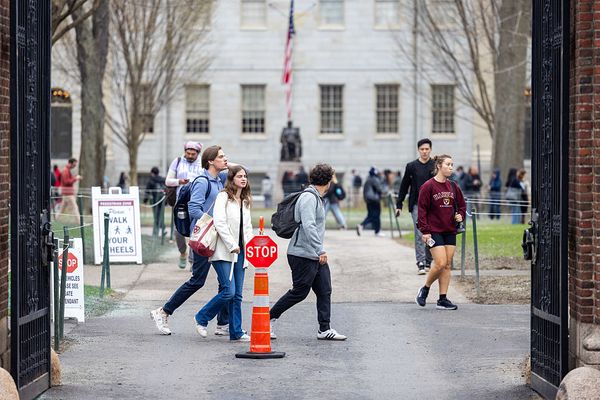During his visit to the Adelaide Zoo on Sunday, Chinese Premier Li Qiang announced that two “equally beautiful, lively, cute, and younger” pandas would be given to Australia to replace Wang Wang and Fu Ni, who will return to China later this year after calling Adelaide home for 15 years.
The gifting of pandas to other countries has long been a part of Chinese diplomacy. But what exactly is this unique approach to Chinese soft power? Why does it work? And will it profoundly impact Australia-China relations now?
China’s panda diplomacy from Mao to now
Panda diplomacy by the People’s Republic of China began in the 1950s when the newly established communist regime under Chairman Mao Zedong started giving pandas to its socialist allies to strengthen ideological ties and foster diplomatic goodwill.
Ping Ping and Qi Qi, China’s first panda “ambassadors”, arrived in the Soviet Union in 1957 to celebrate the 40th anniversary of the October Revolution, when the Bolshevik party seized power in Russia.
A pivotal moment then came in 1972. Following US President Richard Nixon’s historic visit to Beijing, two pandas, Ling-Ling and Hsing-Hsing were gifted to the United States. This gesture symbolised a strategic shift in China’s foreign policy towards engaging with Western nations and easing Cold War tensions.
Later that year, Japan also received two pandas, Kang Kang and Lan Lan, after normalising diplomatic relations with China.
By 1984, under Deng Xiaoping’s leadership, panda diplomacy transitioned from outright gifts to long-term loans, embodying China’s market-orientated economic reforms.
The lease model saw pandas being loaned for significant fees, typically between US$500,000 to $1 million per year (A$755,000–$1.5 million), with the proceeds directed towards conservation efforts in China. These agreements also typically trigger joint research projects on panda conservation, fostering scientific collaboration alongside diplomatic relations.
Adelaide’s Wang Wang and Fu Ni, the only giant pandas currently in the Southern Hemisphere, came to Australia under such a deal in 2009.
Under current Chinese leader Xi Jinping, panda diplomacy has been regularly used to symbolise China’s willingness to strengthen bilateral relations with other nations.
For instance, Malaysia received two pandas in 2014 to mark the 40th anniversary of its diplomatic ties with China. Likewise, two pandas were sent to Indonesia in 2017 as part of the 60th anniversary of the countries’ relations.
The loan of two pandas to Germany in 2017 coincided with Xi’s visit to Berlin. He and then-German Chancellor Angela Merkel also attended the official opening ceremony of the Panda Garden at Zoo Berlin.
Even the recent tensions between the US and China haven’t derailed panda diplomacy. Last year, the US returned three pandas – Tian Tian, Mei Xiang, and their American-born son Xiao Qi Ji (which means “Little Miracle” in Mandarin) – from the Smithsonian Zoo in Washington to China. But Xi said two new giant pandas would take their place later this year, calling them “envoys of friendship between the Chinese and American peoples.”
Why pandas? And what are the challenges?
If it’s not already obvious, pandas are cute and charismatic. Because of their gentle demeanour, pandas have been seen as symbols of peace and friendship.
However, there is more to pandas than just their charm. They are distinctly Chinese – they are only found in the wild in China – yet hold universal appeal. They have long drawn global attention to endangered and vulnerable species, highlighting issues such as climate change. The World Wildlife Fund’s logo, in fact, is a panda, further demonstrating its appeal as a universal symbol for conservation movements.
Despite their effectiveness as ambassadors, pandas are incredibly difficult to breed in captivity, with narrow mating windows and complex needs. Wang Wang and Fu Ni, for instance, have failed to conceive at Adelaide’s zoo, despite considerable efforts.
Another challenge is the considerable financial pressure pandas can impose on host countries to meet the stringent requirements for their care.
This raises questions of whether the funding should be directed to other projects that need financial resources instead.
Read more: Panda diplomacy: what China's decision to send bears to the US reveals about its economy
How successful will Li’s panda diplomacy be in Australia?
Li’s visit to Adelaide Zoo – his first stop on his Australia visit – symbolises China’s willingness to stabilise and improve its relationship with Australia.
Responding to Prime Minister Anthony Albanese’s call for pandas to remain in Australia during his visit to China last November, Li’s gesture represents a significant diplomatic move after years of frosty relations between the countries.
An empirical study in the United States has shown that panda diplomacy has been relatively effective in building positive attitudes towards Chinese culture, people and government.
However, pandas can only do so much. A recent poll indicates Australians remain wary of China’s government, despite improving diplomatic relations in the past year.
And profound challenges are expected to continue testing Australia-China relations, such as Australia’s enhanced security alliance with the US, the imprisonment of Chinese-Australian author Yang Hengjun and recent confrontations between the Chinese and Australian militaries.
As such, some commentators have warned Albanese not to allow Li’s trip to become a “propaganda boon” for China. Ultimately, the true measure of success of any bilateral relationship will hinge on tangible policy changes and mutual trust, beyond the symbolism of panda diplomacy.
Yu Tao receives research funding from the National Foundation for Australia-China Relations. However, the opinions expressed in this article are those of the author and do not reflect the official policy or position of the National Foundation for Australia-China Relations.
This article was originally published on The Conversation. Read the original article.







